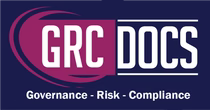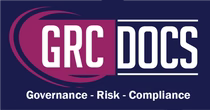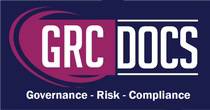Understanding the Importance of NIST and ISO in Today's Business World
Introduction
NIST (National Institute of Standards and Technology) and ISO (International Organization for Standardization) are two internationally recognized organizations that play a crucial role in setting standards for various industries. While NIST Cybersecurity Framework focuses on promoting innovation and industrial competitiveness through its measurement science, standards, and technology programs, ISO aims to develop and publish international standards that ensure quality, safety, and efficiency in products, services, and systems. Understanding the importance and impact of NIST and ISO standards is essential for businesses and organizations striving for excellence in their respective fields.

Overview of NIST: A Closer Look at the National Institute of Standards and Technology
NIST, also known as the National Institute of Standards and Technology, is a prestigious organization that holds a vital place in the world of standards and technology. Established in 1901, NIST operates under the U.S. Department of Commerce and operates a wide range of programs to enhance innovation and competitiveness.
One of the primary focuses of the NIST Cybersecurity Framework is to provide accurate and reliable measurements. The organization ensures that industries can trust and rely on consistent measurements, which is essential for fair trade and scientific research. NIST is also responsible for developing and maintaining the U.S. national standards, known as the National Institute of Standards and Technology Handbook series.
Moreover, NIST actively promotes and advances technology in fields such as cybersecurity, manufacturing, and information technology. Through research, training, and collaborative efforts, NIST contributes to the development of cutting-edge technologies that drive economic growth and improve public safety.
Benefits of NIST Compliance: Why your Business Should Consider Aligning with NIST Standards
NIST is a leading authority on cybersecurity and provides comprehensive guidelines, frameworks, and best practices to help organizations strengthen their cybersecurity defenses. By aligning with NIST standards, businesses can reap a multitude of benefits, including:
-
Enhanced Security Posture: NIST standards offer a structured and systematic approach to cybersecurity, allowing businesses to establish strong security controls and protocols. By implementing NIST-recommended security measures, organizations can significantly reduce their risk exposure to cyber threats and vulnerabilities.
-
Regulatory Compliance: Many industries are subject to stringent regulatory requirements concerning data security and privacy. NIST standards provide a roadmap for achieving compliance with various regulatory frameworks, such as the General Data Protection Regulation (GDPR), Health Insurance Portability and Accountability Act (HIPAA), and Payment Card Industry Data Security Standard (PCI DSS). Aligning with NIST guidelines ensures that businesses meet regulatory obligations and avoid costly penalties for non-compliance.
- Risk Management: NIST emphasizes a risk-based approach to cybersecurity, wherein organizations assess their cybersecurity risks, prioritize mitigation efforts, and allocate resources effectively. By following NIST risk management practices, businesses can identify and address potential vulnerabilities proactively, minimizing the likelihood of cyber incidents and their impact on operations.
-
Interoperability and Compatibility: NIST standards are designed to be flexible and adaptable to diverse business environments and technological landscapes. By adhering to NIST guidelines, organizations can ensure interoperability and compatibility across systems, applications, and devices, facilitating seamless integration and communication between different components of their cybersecurity infrastructure.
-
Industry Reputation and Trust: Demonstrating a commitment to cybersecurity through NIST compliance can enhance an organization's reputation and build trust with customers, partners, and stakeholders. In an era where data breaches and cyber attacks are prevalent, customers are increasingly prioritizing security when choosing service providers and vendors. By adhering to NIST standards, businesses can differentiate themselves as trustworthy and reliable partners in the eyes of their stakeholders.
- Continuous Improvement: NIST promotes a culture of continuous improvement in cybersecurity practices. By aligning with NIST standards, organizations commit to regularly evaluating and refining their cybersecurity strategies, policies, and procedures to adapt to evolving threats and emerging technologies. This proactive approach ensures that businesses stay ahead of cyber threats and maintain a strong defense posture over time.
Introduction to ISO: The International Organization for Standardization and Its Relevance in Business
While NIST compliance is crucial for strengthening cybersecurity and operational efficiency, it is not the only standard that businesses should consider. The International Organization for Standardization (ISO) also plays a significant role in promoting best practices and quality management systems across various industries. ISO is an independent, non-governmental organization that develops and publishes international standards. These standards cover diverse areas such as quality management, environmental management, information security, and occupational health and safety. By adhering to ISO standards, businesses can demonstrate their commitment to meeting global benchmarks for excellence.
ISO standards offer several benefits for organizations. Firstly, they provide a framework for consistent processes and practices, enabling businesses to streamline operations, reduce errors, and increase productivity. This can lead to cost savings and improved customer satisfaction. Moreover, ISO certification can enhance a business's reputation and credibility. It demonstrates to customers, partners, and stakeholders that the organization has implemented effective systems and controls to meet international standards. This can open new doors for business collaborations and contract opportunities.
Advantages of ISO Certification: How ISO Standards Can Enhance Your Business Operations
Now, let's dive deeper into the specific advantages of ISO certification and how it can enhance your business operations. One major advantage of ISO certification is the objective framework it provides for consistent processes and practices. By implementing ISO standards, businesses can streamline their operations, reduce errors, and increase productivity. This not only leads to cost savings but also improves customer satisfaction. With ISO certification, you can ensure that your organization is following a set of globally recognized guidelines for excellence.
Furthermore, ISO certification enhances your business's reputation and credibility. It demonstrates to customers, partners, and stakeholders that your organization has implemented effective systems and controls to meet international standards. This can open new doors for business collaborations and contract opportunities, giving you a significant competitive edge in the global market.

Implementing NIST and ISO: Tips and Best Practices for a Seamless Integration
The best practices and tips for implementing the National Institute of Standards and Technology (NIST) and International Organization for Standardization (ISO) frameworks in a seamless manner. Integrating these frameworks into your organization's processes can be a complex task, but with the right approach, it can yield tremendous benefits. To begin with, it is crucial to have a clear understanding of the specific requirements of NIST Cybersecurity Frameworks and ISO standards relevant to your industry. Conducting a thorough assessment will help identify any gaps in your current practices and determine the necessary steps for compliance.
Next, establish a dedicated team responsible for the integration process. This team should comprise individuals with expertise in quality management systems, information security, and project management. Their role will be to guide the implementation, monitor progress, and address any challenges that may arise. Communication and employee engagement are also vital during the implementation process. Educate your workforce about the benefits of NIST Cybersecurity Frameworks and ISO frameworks and provide training on the new processes and procedures. Encourage a culture of continuous improvement and emphasize the importance of compliance.
Regular monitoring and evaluation should be conducted to ensure ongoing adherence to the standards. This includes conducting internal audits, reviewing performance metrics, and soliciting feedback from employees and customers. Address any non-compliance issues promptly and implement corrective actions as necessary. By following these tips and best practices, your organization can seamlessly integrate NIST and ISO frameworks, leading to improved efficiency, enhanced security, and increased customer trust.
The Future of NIST and ISO: What to Expect and How to Stay Ahead in an Evolving Business Landscape
As technology continues to evolve and industries face new challenges, it's important to stay ahead of the game when it comes to implementing NIST and ISO frameworks. The future of these standards holds promising developments that organizations should be prepared for. One key factor to consider is the ever-changing regulatory landscape. As governments and regulatory bodies become more aware of the importance of cybersecurity and data protection, it's likely that new regulations and updates to existing standards will emerge. Staying informed about these changes will be essential in ensuring ongoing compliance.
Additionally, advancements in technology will continue to shape the way organizations implement NIST Cybersecurity Frameworks and ISO frameworks. Automation, artificial intelligence, and cloud computing are just a few examples of technological developments that can greatly impact compliance efforts. Keeping up with these trends and understanding how they can be integrated into your organization's processes will be crucial for success. Furthermore, the future of NIST and ISO is likely to become more interconnected with other frameworks and standards. For example, GDPR, HIPAA, and PCI DSS are already commonly integrated with NIST and ISO frameworks. Expect to see more collaboration and integration with other relevant frameworks as organizations aim to streamline their compliance efforts.
To stay ahead in this evolving business landscape, organizations should prioritize continuous improvement and ongoing education. Attend industry conferences and workshops, participate in webinars, and engage with the cybersecurity and quality management communities to stay up to date on the latest trends and best practices. Lastly, don't underestimate the importance of building a strong network of trusted partners and consultants who can provide guidance and support throughout your compliance journey. They can help navigate the complexities of NIST and ISO frameworks, assist with the implementation process, and provide valuable insights into emerging trends.
Conclusion
Harnessing the power of NIST Cybersecurity Frameworks and ISO frameworks is crucial for organizations seeking long-term business success. As we have explored in this blog series, these standards are constantly evolving to keep up with the changing regulatory landscape and technological advancements. Staying informed about regulatory changes and understanding how to integrate new technology trends will be vital in maintaining compliance and securing sensitive data. Additionally, organizations should prioritize continuous improvement through ongoing education and engagement with industry experts.
By building strong networks of trusted partners and consultants, organizations can navigate the complexities of NIST Cybersecurity Framework and ISO frameworks with ease. These professionals can provide valuable guidance and insights, ensuring a smooth implementation process. The future of NIST and ISO is bright, with increased collaboration and integration with other relevant frameworks expected. Organizations must embrace these changes to streamline compliance efforts and drive business success.




